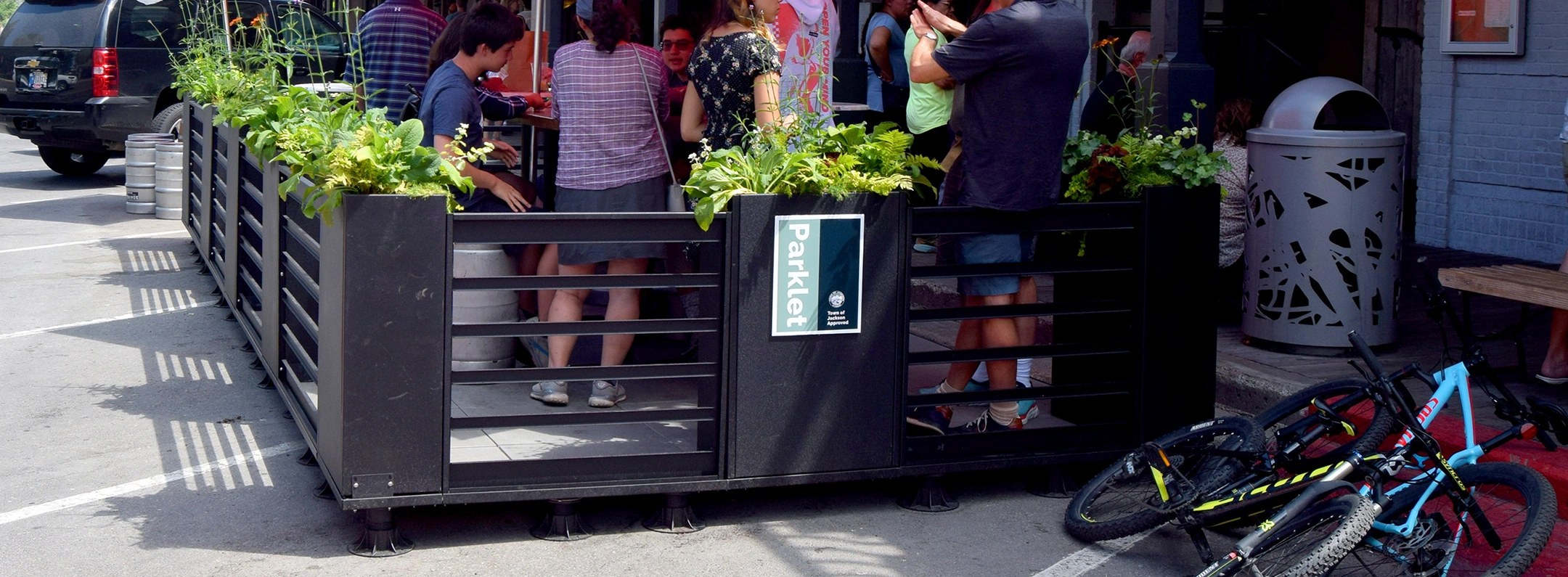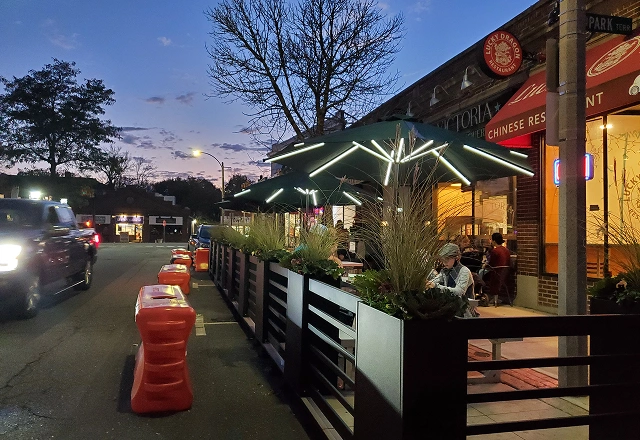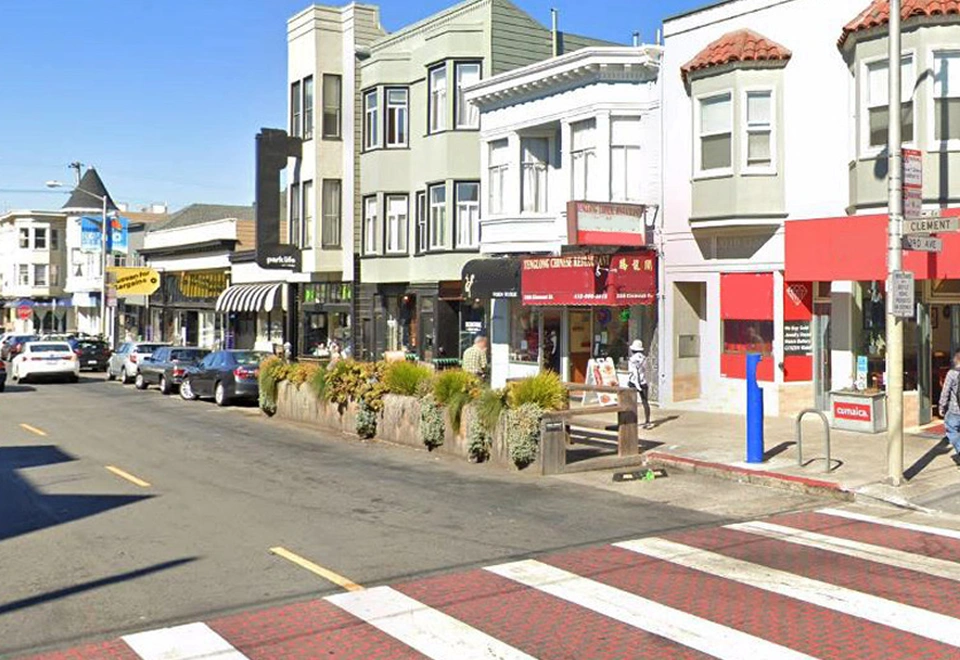
Parklets Transform and Enhance Urban Spaces
Create vibrant, business and pedestrian friendly spaces by adding a parklet to underutilized street space. Below you will find information on what a parklet is, the history of parklets, the benefits of parklets, and some useful links.
What is a Parklet?
A parklet is a small public space that transforms one or more curbside parking spots into welcoming areas or “parks” for people. Sometimes called street seats, streateries, pop-up parks, or curbside seating with sidewalk extensions, parklets are typically created through partnerships between cities, local businesses, and community groups. They often feature tables, chairs, benches, planters, greenery, or bike racks, offering extra seating and gathering space in busy downtowns and commercial districts. By reimagining underused street space, parklets add vibrancy, support local businesses, and make neighborhoods more pedestrian-friendly.

The History of Parklets
The parklet concept began in 2005 in San Francisco when the design collective Rebar transformed a single metered parking spot into a mini public park with grass, a potted tree, and a bench—sparking the global Park(ing) Day annual event. From these grassroots origins, parklets began to flourish both in San Francisco and then other cities across the world. The COVID 19 pandemic greatly increased the number of parklets found across the United States and the rest of the world given the need and demand for outdoor seating.
Parklets remain popular today with new installations being added to cities and neighborhoods that are committed to creating vibrant, pedestrian-friendly spaces.

The Benefits of Parklets

Parklet Design Considerations
Here are some of the most important considerations before planning or building a parklet.
How Do I Start the Process to Build a Parklet?
This process usually beings with an individual or group that sees the benefits and need for a parklet and champions the process. Most cities, towns, and downtown associations are familiar with parklets, with many having formal parklet programs and applications. Reach out to the city, often to the Parking, Planning, or Economic Development department, to inquire about what the process looks like in your area.
Next, you’ll be on to design and approvals. Designing custom parklets from scratch can be an option but is often time-consuming and expensive. DIY parklets are also worth considering, but they often don’t pass safety checks and can look unattractive. Professionally designed modular parklets are a good option as they include proper documentation, offer design flexibility with a polished look, and are easy to install.

Links and Resources about Parklets
If you are interested in learning more about parkets, here are a few helpful links:
NACTO
The National Association of City Transportation Officials. This organization connects and organizes American cities and transit agencies toward safe, sustainable, and accessible transportation.
Possible
We believe our streets should be more than just parking lots for cars — they should be places where communities can come together, relax, and enjoy a bit of green space.
San Francisco – Ground Play
Groundplay works with ordinary San Franciscans to build temporary installations that turn underused public spaces into joyful community places.
Wikipedia
A parklet is a sidewalk extension that provides more space and amenities for people using the street. Usually parklets are installed on parking lanes and use several parking spaces.







